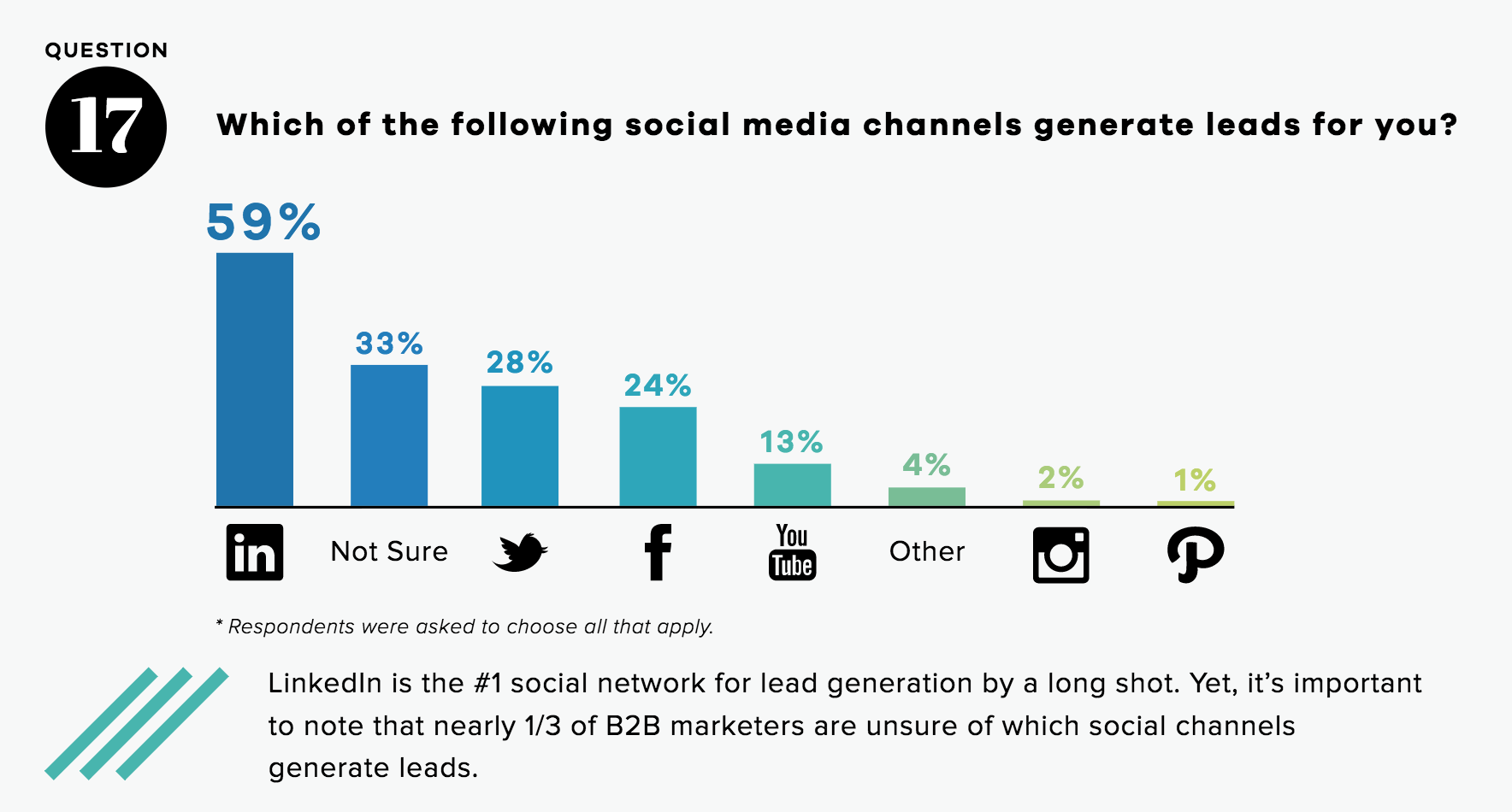“I just don’t have time for managing my personal or company LinkedIn profile. Plus, I just don’t see the value in how it ultimately generates new business for me and that’s what I really care about.”
I’m afraid this comment I recently heard from a CEO is still the sentiment of many business leaders today. They are still discerning the value of investing their time or resources in their personal and company LinkedIn channels, which is actually a tactic of inbound sales strategies called social selling or prospecting.
Does LinkedIn really generate new business?
Statistics Don’t Lie (And neither do users)
Take for example this recent story about a machine shop and rebuilder executive from the Milwaukee Journal Sentinel, written by Kathleen Gallagher. Mike Mallwitz is a no-nonsense executive who for years swore by old-school forms of communication: picking up the phone and calling to generate business.
Now, however, he is increasingly relying on a different approach. Using LinkedIn.
As president of Busch Precision Inc., a nearly 110-year old Milwaukee machine shop and rebuilder, Mallwitz says he’s using LinkedIn to stay connected with customers and former employees.
Milwaukee-based LinkedIn trainer, speaker and consultant Wayne Breitbarth said that businesses should think of LinkedIn as the best database that business professionals will ever have. In the past, companies had to buy databases to generate new connections. With LinkedIn, users keep their own information. Purchasing managers are on LinkedIn searching for providers of products and services because they don’t want to be bothered by salespeople who call them.
LinkedIn is the #1 Social Network for Lead Generation

Consider these statistics according to recent research:
- LinkedIn is the #1 social network for driving traffic to corporate websites
- 50% of LinkedIn members are more likely to buy from a company they engage with on the social networking site
- 80% of LinkedIn members want to connect with companies
- 80% of B2B social networking leads come from LinkedIn
- The increase in leads B2B marketers are generating on LinkedIn is at 150%
- Discussion groups produce 86.3% of conversions
Whether you come from manufacturing, healthcare, senior living or professional services, every professional benefits from LinkedIn.
Discover more about inbound sales in our free eBook - Click-to-Close Converting Inbound Leads to Sales
Reciprocity Builds Your Net Worth
Since we established that LinkedIn is a valuable channel for you both professionally and as a company, the next question I’m often asked is, “How does LinkedIn generate business?”
Remember the Rule of Reciprocity? According to Wikipedia, “In social psychology, reciprocity is a social rule that says people should repay, in kind, what another person has provided for them; that is, people give back (reciprocate) the kind of treatment they have received from another. By virtue of the rule of reciprocity, people are obligated to repay favors, gifts, invitations, etc. in the future. If someone receives a gift for their birthday, a reciprocal expectation may influence them to do the same on the gift-giver's birthday. This sense of future obligation associated with reciprocity makes it possible to build continuing relationships and exchanges.”
The secret sauce to generating more business in the age of inbound sales is giving others what they want. When you are authentic and genuine in helping others solve their problem on LinkedIn, it will come back to you. It’s important to note that if you are expecting fast results, you’ll want to adjust your expectations. Building relationships and trust takes time.
In the traditional sense of professional or business development, most leaders are familiar with (although some may not like it) networking. Basically connecting with people either intentionally like at a Rotary meeting, or informally at church or golfing event. During that connection, you exchange information. Maybe you learned something new that someone else knew that would address a problem you’ve been working on. In exchange, at a later point in time, you may thank the person that made the connection, or pass their name on to someone else you come in contact with.
LinkedIn works the exact same way. By growing your online network, you expand your ability to reach people that need your product or service as well as identify people that can help you grow your business. The “giving” element is in “what” information you share when posting.
The norm for all of us is to talk about our product or service first. Here’s the rub—that is exactly what you don’t do on LinkedIn. Instead you share helpful advice and information related to the questions people searching for your business are asking. As Aimee Bucher, our Chief Marketing Technologist always says, “you want your content to join the conversation going on in the head of your potential lead or prospect.”
John Maxwell sums reciprocity up best, “Your network is your net worth.” So think of your investment in LinkedIn as time spent building your net worth.
Action Equals Results
Did you realize that someone must see you online seven to ten times before they remember you? That means each time you share and interact on LinkedIn, you need to ensure that your content and activity is adding value to the network. That is how you earn trust, credibility and authority—the characteristics that other people look for when searching authentic business connections.
Here are a few basic action items to get you growing your connections as recommended by Stephanie Sammons, the author of Linked to Influence (great book that I highly recommend if you are a DIYer)
1. Profile
Of course before you actively engage in your LinkedIn channel, you want to make sure that you have thoroughly and completely set up both your personal and company LinkedIn pages. People will want to connect with you based upon what they observe in your profile. This includes a professional image and complete sales funnel oriented profile (not a resume.) Your summary should tell a story of why people would want to connect with you—what value do you add to their network?
2. LinkedIn Groups
Researching and associating with groups where your target audience is a great avenue to grow your connections. Groups also provide a great opportunity to drive traffic back to your website.
3. Content
Develop a plan for developing unique helpful content to share in your channel that your prospects will find helpful. One of the key components to building your personal influence is by revealing how well you understand the needs and desires of your ideal clients and customers. The most effective method for ultimately selling your products or services is to give as much knowledge and guidance away to your network as possible. Not only does this method establish your credibility, it also provides value.
4. Personalize
It’s important to personalize your status updates by sprinkling in your personality, passion and perspective whenever possible. Personalization will help you achieve higher engagement levels with your status updates. Personalization also builds influence.
5. Consistency
Almost every activity you engage in on LinkedIn creates a visible update that can potentially be seen by your network. If you aren’t consistently active on LinkedIn, you will not be top of mind. Remember the 7-10 times number earlier? Consistency builds trust. If your competitors are more active on LinkedIn than you are, this can hurt your business.
Closing Thoughts
I personally have generated business and referrals via LinkedIn and highly recommend executive leaders and business owners reconsider their perspective on using the channel as a strategy to grow their business. A LinkedIn strategy will help you become more influential and grow your business with your ideal clients or customers. LinkedIn provides the avenue for you to accelerate the trust building process. It also gives you access to information about people and avenues to connect that you’ve never had before. Like anything else worth having, developing and managing a LinkedIn strategy does require a dedicated focus, but it’s worth it! I encourage you to check out the resources I referenced and grow in your knowledge of the power of LinkedIn as part your inbound sales strategy.
Feel free to connect with me on LinkedIn - and don’t forget to follow the Marketing Essentials LinkedIn company page for more great inbound marketing and sales tips!
For help integrating LinkedIn and other social media channels into your overall marketing strategy, contact Marketing Essentials today.


